Home Cost How Much Do Solar Batteries Cost?
How much do solar batteries cost?
Solar storage batteries come in different sizes to suit your storage needs. The price varies depending on the size/capacity of the battery, its chemical composition, and the brand that makes it.
A typical 14kWh solar battery (Tesla2 Powerwall)1 costs $12000 to $14000 purchase and install. Prices start at $668 per kWh of storage.
Let’s take a look in detail at how a solar battery will enhance your solar panels and extend the use of clean energy.
Table of Contents
ToggleSolar Battery Price & Spec List
There are lots of different solar battery brands, sizes, storage capacity, and prices. Here is a list of some of the more popular lithium-ion solar batteries.
| Battery | Image | Type | Cost per kWh | Battery inverter combo? | Storage size | Modular? | Weight | Max efficiency | Max power | Warranty | Specs Sheet | Nominal Capacity | Voltage Range | Housing Protection | Communication | Technlogy Class |
| Company | Alpha Ess | Ampetus Energy | LG | Soltaro 2 | Aquion Energy | Sungrow-Samsung sbp4k8 | Tesla Powerwall 2 | ZEN Energy | sonnenBatterie Eco | Fronius Solar Battery | Redflow Zcell | Leclanche Apollion Cube | Simpliphi Batteries | Solax | Magellan Power | Enphase Energy | AKASOL’s neeoQube | Sunverge SIS | Redback Technologies | Hansol Technics | Sungrows |
| Battery | Smile5-INV | Ampetus Super Lithium | RESU 3.3 | Soltaro 2 | Aspen 48M | SBP4K8 | Power Wall 2 | ZEN HYBRID STORAGE SYSTEM | Batterie ECO 8.14 | SYMO HYBRID 3.0-3-S | Zcell | Apollion Cube 15s | OES3 | Triple Power T-BAT H 5.8 | HESS | Encharge 3 | neeoQube | SIS - 6848 | BE14000 | A10 10.8 | SBP4K8 |
| Image |

|
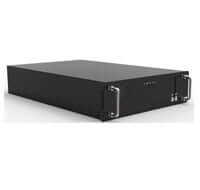
|
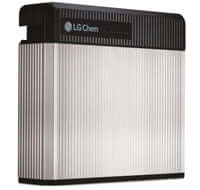
|
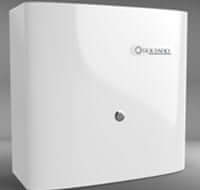
|
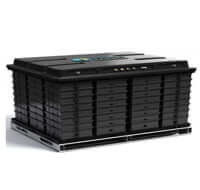
|

|
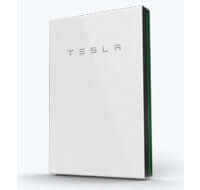
|
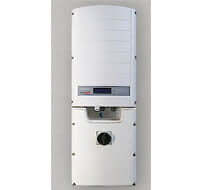
|

|

|
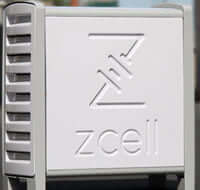
|
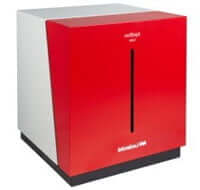
|
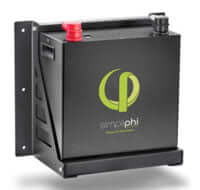
|
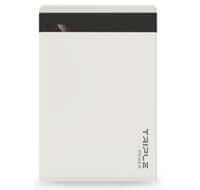
|
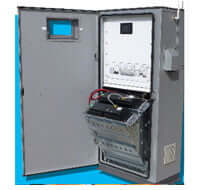
|
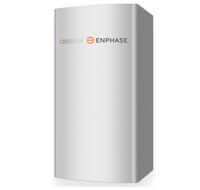
|

|
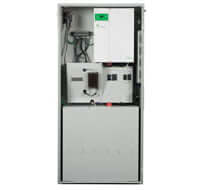
|
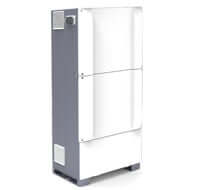
|
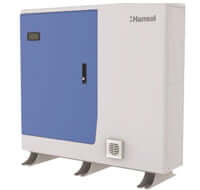
|
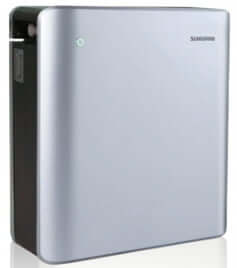
|
| Type | Lithium-ion | Lithium-iron-phosphate | Lithium-ion | Lithium | Saltwater | Lithium ion | Lithium ion | LG Chem RESU10H | lithium iron phosphate | Lithium ion | Zinc-bromine | lithium iron | Lithium Ferrous Phosphate | Lithium Ferrous Phosphate | Advanced Lithium Ion (NMC) | Lithium iron phosphate | Lithium ion | Lithium ion | Lithium ion | Lithium ion | Lithium ion |
| Cost per kWh | $668 | $756 | $837 | $850 | $880 | $962 | $1,000 | $1,000 | $1,071 | $1,111 | $1,260 | $1,380 | $1,398 | $1,540 | $1,610 | $1,714 | $2,143 | $2,229 | $2,241 | $2,700 | $730 |
| Battery inverter combo? | Yes | Yes | Yes | Yes | Yes | Yes | Yes | Yes | Yes | Yes | Yes | Yes | Yes | Yes | Yes | Yes | Yes | Yes | Yes | Yes | Yes |
| Storage size | 13.6kW | 3kW | 3.kW | 2 kW | 25.9kW | 4.8 kW | 14 kW | 10kW | 14kW | 5kW | 10kW | 18kW | 3.4 kW | 4 kW | 6.5kW | 3.36 kW | 5.5 kW | 11.6 kW | 4.8 kW | 4.98 kW | 4.8 kW |
| Modular? | Yes | Yes | Yes | Yes | Yes | Yes | Yes | Yes | Yes | Yes | Yes | Yes | Yes | Yes | Yes | Yes | Yes | Yes | Yes | Yes | Yes |
| Weight | 60 KG | 53 KG | 31 KG | TBD | 1504 KG | 48 KG | 114 KG | 228 KG | 95 KG | 34.8 KG | 72.2 KG | 44 KG | 52 KG | 62KG | TBD | TBD | 239 KG | 48 KG | |||
| Max efficiency | 97.60% | 95% | 95% | 90% | TBD | 95% | 90% | 98% | 90% | 97% | 98% | 90% | 97% | 96% | 98% | 92.50% | 90% | 96% | 95% | ||
| Max power | 13.6kW | 3kW | 3.kW | 2 kW | 25.9kW | 4.8 kW | 14 kW | 10kW | 14kW | 5kW | 10kW | 18kW | 3.4 kW | 4 kW | 6.5kW | 3.36 kW | 5.5 kW | 11.6 kW | 4.8 kW | 4.98 kW | 4.8 kW |
| Warranty | 10 Years | 10 Years | 10 Years | 10 Years | 8 Years | 10 Years | 10 Years | 10 Years | 10 Years | 10 Years | 10 Years | 2 Years | 10 Years | 10 Years | 10 Years | 10 Years | 10 Years | 10 Years | 5 Years | 5 Years | 5 Years |
| Specs Sheet | Yes | Yes | Yes | Yes | Yes | Yes | Yes | Yes | Yes | Yes | Yes | Yes | Yes | Yes | Yes | Yes | Yes | Yes | Yes | Yes | Yes |
| Nominal Capacity | TBD | 60 Ah | 63 Ah | 40 Ah | 48 Ah | 94 Ah | TBD | TBD | TBD | TBD | TBD | TBD | 66 Ah | 115.2 Ah | TBD | TBD | TBD | TBD | TBD | TBD | 94 Ah |
| Voltage Range | 40-60 VDC | 42 - 58 VDC | 42.0 ~ 58.8 VDC | 40V - 58.4V | 40 to 59.5 V | 44.8 V–58.1 V | TBD | TBD | TBD | TBD | 40-58 V | TBD | TBD | 100-131 V | 42 - 58.8 V | 240/211—264 VAC | 37,8 V to 58,8 V | TBD | 125 – 550V | TBD | 44.8 V–58.1 V |
| Housing Protection | IP65 | IP21 | IP55 | IP65 | IP2X | TBD | TBD | TBD | TBD | TBD | TBD | IP 21 | TBD | IP55 | TBD | TBD | IP 50 | TBD | IP65 | TBD | IP55 |
| Communication | Ethernet | RS485/CAN-BUS | CAN 2.0 B | RS485/CAN | TBD | CAN | Worldwide Compatibility | TBD | TBD | TBD | TBD | CAN – SMA ready | TBD | TBD | TBD | Wireless 2.4 GHz | TBD | CAN BUS | TBD | TBD | CAN 2.0 B |
| Technlogy Class | TBD | TBD | TBD | TBD | TBD | TBD | TBD | TBD | TBD | TBD | TBD | TBD | TBD | TBD | TBD | TBD | TBD | TBD | TBD | TBD | TBD |
Solar Batteries cost per kilo Watt x Brand
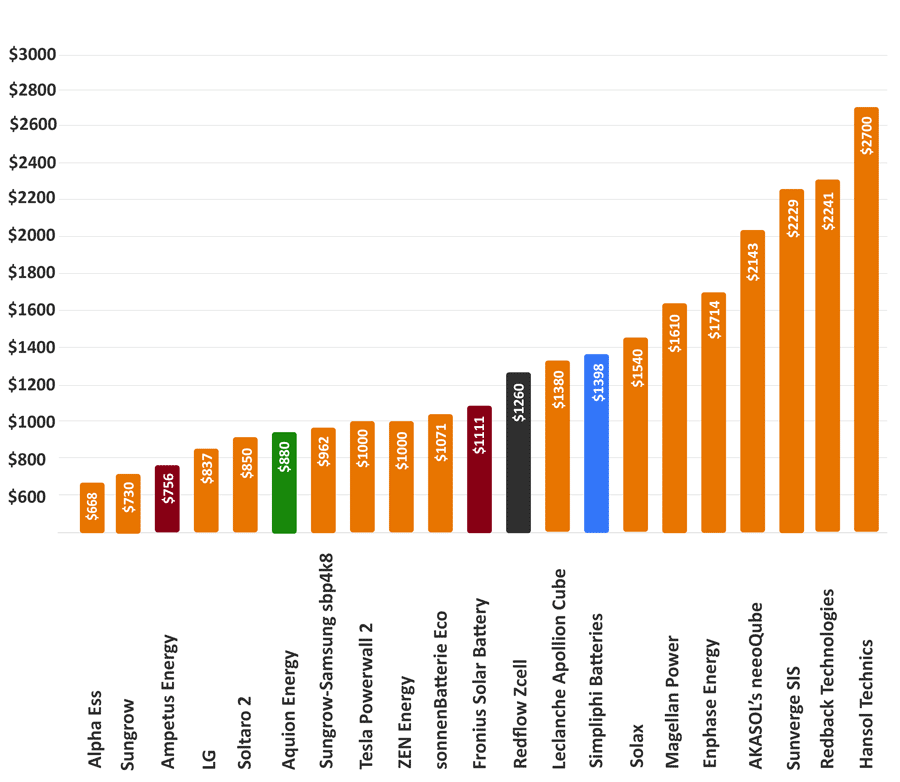
What batteries are best for solar storage?
You have three solar battery options for your house, including lead-acid, lithium-ion, and saltwater. Lithium-ion batteries are the most efficient, but they are also expensive. The other two are more affordable. If you are not sure about the type of battery to go for, here’s a quick explanation to help you out:
1. Lithium-ion batteries
One of the latest solar battery technology, lithium-ion batteries are lightweight and compact in size. They are the most expensive out of the three, but they have a longer product life and a higher Degree of Depletion (DoD). They are the gold standard in battery storage and the best choice.
2. Lead-acid batteries
Lead-acid batteries are commonly used in off-grid systems, but they have a short product life and has a lower DoD compared to the other two. They make a good option if you are looking for an affordable alternative to lithium-ion batteries. If you are planning to go completely off-grid and need to install several batteries to sustain a normal schedule, lead-acid batteries should be your first voice.
3. Saltwater batteries
Saltwater batteries are a recent innovation and a more eco-friendly option as it doesn’t contain any heavy materials. Instead, it uses saltwater electrolytes. The battery is easy to recycle but requires a special process to dispose of it. Despite their good features, we don’t recommend you to use saltwater batteries because they haven’t undergone extensive testing nor have they been in the market long. They are probably the best option for larger installations such as for commercial buildings though.
Out of these, lithium-ion batteries are the best choice because these batteries last longer, are smaller and lighter weight. However, if you are low on budget, but still want to turn eco-friendly while saving money at the same time, lead-acid batteries are a good choice.
Lithium-ion vs. Lead-acid
Modern humans have been using lead-acid batteries for more than 150 years. We have developed a comparison chart along with an in-depth difference between the two to help you pick the right one:
| Lithium-ion batteries | Lead-acid battery | |
|---|---|---|
| Chemistry try (metal used inside) | lithium | lead |
| Cost per battery | $5,000 to $15,000 | $2,000 to @7,000 |
| Average weight | 13 kilograms | 40 kilograms |
| Amp hours | 100 | 110 |
| Life span (daily cycles) | 2,000 to 5,000 | 5,00-1,000 |
| Cost spent on battery for 10 years | $1,300 | $3,736 |
| Winner | Yes | No |
Are solar batteries worth the price?
Solar batteries are expensive! They also kill your ROI time and only last 10 years with current solar battery technology. Normally a solar system would take 3 years to pay for itself, but with a battery, it will take 10 + years.
Here’s the score
Because the technology of solar batteries is not quite there yet, and prices are still too high, you are one going to finish paying it off when it’s time to replace it. Basically, it’s not worth it!
Do this instead
While we are waiting for the technology to come up to speed, just install panels and sign up to a good feed-in tariff. That way you are essentially using the grid as your own person battery.
Utility companies credit you for excess solar energy generated through the day that you can not use (70% of per consumed happens at night when panels are not producing power). They then feed that energy back to you at night. The utility companies make a little money on you because they are buying it at off-peak times and feeding it back to at peak time, but you still cut your bills by 90%.
That Extra 10% that batteries save you is just not worth it.
Most Popular Solar Batteries Cost
| Battery | Cost | Capacity | Warrenty | Type |
|---|---|---|---|---|
| Tesla Powerwall 2 | $14,000 | 14kWh | 10 years | Lithium ion |
| sonnenBatterie Eco | $15,000 | 14kWh | 10 years | Lithium ion |
| Sungrow-Samsung sbp4k8 | $4,610 | 4.8kWh | 10 years | Lithium ion |
| Redflow Zcell | $12,600 | 10kWh | 10 years | Zinc-bromine |
| Enphase Energy | $2,057.00 | 1.2kWH | 10 years | Lithium ion |
| ZEN Energy | $10,000 to $15,000 | 10kWh to 20kWh | 10 years | Lithium ion |
| Ampetus Energy | $2,300 | 3kWh | 15 years | Lithium-iron-phosphate |
| AKASOL’s neeoQube | $12,000 | 5.5(kWh) | 10 years | Lithium ion |
| Sunverge SIS | $26,000 | 11.6kWh | 10 years | Lithium ion |
| Alpha Ess | $7,302 | 11kWh | 10 years | Lithium ion |
| Redback Technologies | $10,745 | 4.8kWh | 5 years | Lithium ion |
| Fronius Solar Battery | $5,000 to $20,000 | 4.5kWh – 12.0kWh | 7 years | Lithium-ion phosphate |
| LG | $8,195 | 9.8kWh | 10 years | Lithium ion |
| Aquion Energy | $2,200 | 2.5 kWh | 5 years | Salt Water |
| Solax | $5,390 | 3.5kWh | 5 years | Lithium ion |
| Simpliphi Batteries | $4,750 | 3.4kWh | 10 years | Lithium Ferrous Phosphate |
| Sungrow | $3,500.00 | 4.8 kWh | 10 years | Lithium ion |
| Leclanche Apollion Cube | $9,200 | 6.7kWh | 10 years | Lithium ion |
| Soltaro 2 | $1,700 | 2kWh | 10 years | Lithium ion |
| Magellan Power | $20,600 | 12.8 kWh | 5 years | Lithium ion |
| Hansol Technics | $13,500 | 4.98kWh | 5 years | Lithium ion |
Lithium-ion and lead acid solar batteries direct comparison
1. Useable capacity
Lithium-ion – When you use it regularly, a lithium-ion battery has a rated capacity of more than 85 percent. For example, if you have a 100 amp hour battery, it will store 85 amp-hours or more energy.
Lead-acid – It has a low rated capacity of 30 to 50 percent, making it inefficient storage. This means a 100 amp hour battery will only store up to 50 amp-hours of energy.
Winner: Lithium-ion
2. Efficiency of charging
Lithium-ion – You can fast charge 100 percent of the battery. If you have a good charger, it will take less than half the time lead-acid batteries take. If you are unable to charge it to 100 percent every time, it won’t damage the battery.
Lithium-ion was a great breakthrough in technology when first invented as it does not have a “battery memory”. This means you do not have to deep cycle it each time you charge and discharge.
Lead-acid – Considering it is an old technology, charging the battery is a little complicated. You can bulk charge 80 percent of the battery using a smart three-stage charger, but the remaining 20 percent can’t be fast-charged. If you check the time taken, the 20 percent charge takes the same time it takes to charge the first 80 percent of the battery.
Winner: Lithium-ion
3. Life cycle
Lithium-ion – You can effectively use lithium-ion batteries as they have an extended life cycle of 2,000 to 5,000 cycles. After 2,000 cycles, it will continue to deliver 75 percent of its capacity.
Lead-acid – Even the best lead-acid batteries have a limited life cycle of 500-1000 cycles. If you regularly use the battery, you will have to replace it in less than 4 years.
Winner: Lithium-ion
4. Maintenance requirements
Lithium-ion – It is virtually maintenance-free once you complete the balancing procedure. To make things easier, this is done by your solar installer and everything can be monitored by yourself from the app. It ensures that all cells in the battery are charged automatically using the Battery Management System.
Lead-acid – It is difficult to maintain as it needs to be topped off with distilled water regularly. Even though gel cells and AGM are maintenance-free, they are flooded with water if you overcharge them.
Basically, a nightmare if you are after a set and forget setup.
Winner: Lithium-ion
5. Energy wastage
Lithium-ion – The latest models of lithium-ion batteries are almost 100 percent efficient. It is crucial because your goal is to store as much solar energy as possible, especially when its winter or autumn and energy creation is at a minimum because there is less daylight and the angle of the sun is suboptimal.
Lead-acid – On the other hand, lead-acid batteries are only 85 percent efficient at best and begin to drop off from there quite quickly.
Winner: Lithium-ion
6. Climate resistance
Lithium-ion – Both batteries lose their efficiency in cold temperatures, but the lithium-ion battery is still more efficient than a lead-acid battery. At – 20 degrees Celsius, it will remain 80 percent efficient.
Lead-acid – It is only 30 percent efficient at – 20 degrees Celsius. You are wasting a lot of money by opting for lead-acid batteries. The efficiency is affected similarly at extremely high temperatures as well.
How many solar batteries will I need to power my house?
To find the number of solar batteries your house will require, you need to calculate the household electrical consumption, which is measured in kilowatt-hours. The typical Australian home consumes about 23kWh of energy each day on average. This will fluctuate in times of need like hot days when you are using your air conditioning. Your house’s electricity bill will tell you the energy your house consumes.
As about 70% of all energy is used at night when people are home, it is wise to store about 70% of your average daily consumption to sue at night. If we are taking the national average that is about 16kWh.
How much do some popular solar batteries cost?
The cost of the solar battery you choose depends on your daily energy use, the amount of excess energy your solar panel produces during the day, and the type of system — off-grid or hybrid. On average, solar batteries cost $5000, which comes to around $105/month for five years.
For example, if you use 16 kWh of energy every day, 6 kWh of which is used during the day, then you will need 10 kWh of battery for using it at the night.
10kWh Batteries
Senec. Home Li 10 is an excellent 10 kWh battery costs $15,202,
Redflow ZCell costs $12,600.
If you pay 30c per kWh to your local electricity board, you can save around $1.50 per day by installing a 5 kWh battery. It totals to $547.50 per year, and if the battery lasts for ten years, you save $5,475. A 5 kWh battery costs $3800, so you end up saving $1,675. It decreases with a smaller system and increases with a bigger battery.
How much does it cost to install a Tesla Powerwall?
Tesla Motors launched Tesla Powerwall in 2015. It is a part of the company’s sustainable energy vision along with Tesla Solar Roof. The Powerwall 2.0 battery currently costs $6,700 without installation charges. Equipment and hardware cost adds another $1,100, while installation increases the total cost by $2,000 to $8,000. Tesla decides the final installation cost depending on your location and
You can add financial incentives to the cost to reduce the price. If you plan to install the Powerwall as part of a solar-plus-storage system, the model with a cost between $8,500 and $16,000. It sounds like a huge investment, but it is worth the price you pay because it will turn your house into a self-sufficient and sustainable system.
How much is the price difference?
For the past 20 years, the price of solar batteries has dropped considerably, and the pattern will continue in the future.
Total cost, including the solar batteries and installation, is dropping by nine percent every year. In 2017, a 5kW system cost $3,850. It dropped to $3,311 in 2019. At the same time, electricity cost is increasing by at least six percent a year. If you paid $2,600 in electricity for a year in 2017, you would be paying $3,096 in 2020. If you aren’t ready to pay a huge price right now, you can start with a hybrid system and slowly convert into an off-grid system.
You can benefit from reducing prices while saving some money simultaneously. You will make a return on investment of 25 percent after installing the solar system. You can get good use out of them if you live in a strategic location.
Even though installing solar systems might not be an economical choice, it will save you money in the future. You can power up your entire house using solar energy and not feel bad about using excessive electricity.
FAQs
How long do solar batteries last?
As a general rule, solar batteries will last anywhere between five and fifteen years with the average being 10 years or 10,000 cycles. In order to get the longest lifespan from your battery proper upkeep is required, especially ensuring that the battery is protected from too high or freezing temperatures.
How many solar batteries are needed to power a house?
The exact answer will depend on two things – firstly, how many kWh your house uses, and secondly, which solar batteries you are using. To give you a rough idea, the average U.S household uses almost 30 kWh a day, and a generic solar battery can produce around 10 kWh, meaning you would need three in order to power an average house on solar battery alone daily.
Can a house run on solar power alone?
Yes, with the correct equipment this is possible. Fundamentally, you must have adequate battery storage to store excess power that can be used at night and during low solar days.
Can a Tesla Powerwall power a home?
Yes absolutely, the Tesla Powerwall works like other solar batteries, and stores the excess energy from your solar panel system, which is then used to power the home when necessary.
How many batteries do I need for a 3kW solar system?
This totally depends on how much storage you require in the batteries, which battery type you are using, and if you think you will be draining the energy every day. First, you need to gather this information in order to know how many batteries you need.
How much does a Tesla solar battery cost?
The price is $6,500 per solar battery, plus a further $1,100 for the supporting hardware regardless of how many batteries you order. The capacity for the Tesla solar battery is 13.5 kWh meaning an average home would need two, making a total of $14,100.
Is living off-grid worth it?
This depends on each individual – for many people, the large initial cost of setting up your home in order to life off-grid doesn’t seem justifiable, but for others it does. The costs for living off-grid are steep, especially in the set up where it cost anywhere between fifteen and twenty thousand dollars. However, the average house spends about $1200 per year on electricity alone, so if you can power your whole house and be off-grid, it wouldn’t take that many years to make it worthwhile.
Can I connect solar panels directly to battery?
No, the panel has a higher output than what the battery needs, so if you directly connect them you will most likely destroy the battery, for how much batteries cost to replace it is not worth the risk.
How many batteries do I need for a 200-watt solar panel?
Anywhere between one and four depending on how much solar energy you are able to produce on average a day. For example, if you produce 1.4kWh of energy a day from the panel, then you can use just one 12V battery to sufficiently store the excess.
Can I run an air conditioner with solar power?
Even though you can run an air conditioner with solar power, it is not a very effective use of the power. Air conditioners have a high kWh and tend to need to be running for large periods of time, by using the solar power to run the air conditioner you will use up power and stored energy at a relatively fast rate, and could run the risk of losing power in the house.
How far can solar panels be from the house?
There is no specific amount of distance but of course, the closer the panels are to your home the better. If you plan on having them further away from your home you will need to use thick cabling that is very expensive, but if you don’t use the right cable then it will result in a poor transfer of energy between the panels and your home and can cause a drop in voltage.
How many solar panels does it take to run a house off-grid?
Because the answer will vary from house to house, you need to make a few calculations to come to the right answer. First, determine how much power you need to generate every appliance in your home per day on average. Next, multiply the watts of the panel by the number of hours of sun per day, for example, an 80-watt panel with 5 hours of sun is 400 watts per day per panel. From here you can work out how many panels you need in accordance with your daily output.
- Jeff Sykes , (2024),Tesla Powerwall 2: A Complete 2024 Buyers Guide, Accessed on 7th Feb 2024: https://www.solarchoice.net.au/products/batteries/tesla-powerwall-2-review/
Compare Solar Panel Quotes
Table of Contents
Toggle









